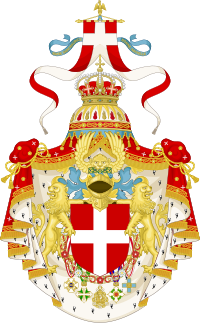House of Savoy
Disputed:
The House of Savoy (Italian: Casa Savoia) is one of the oldest royal families in the world, being founded in 1003 in the historical Savoy region. Through gradual expansion, it grew from ruling a small county in that region to the attainment of the rank of king (of Sicily) in 1713. Through its junior branch, the House of Savoy-Carignano, it led the unification of Italy in 1861 and ruled the Kingdom of Italy from 1861 until 1946 and, briefly, the Kingdom of Spain in the 19th century. The Savoyard kings of Italy were Victor Emmanuel II, Umberto I, Victor Emmanuel III, and Umberto II. The last monarch ruled for a few weeks before being deposed following the Constitutional Referendum of 1946, after which the Italian Republic was proclaimed.
The name derives from the historical region of Savoy in the Alpine region between what is now France and Italy. Over time, the House of Savoy expanded its territory and influence through judicious marriages and international diplomacy. From rule of a small region on the French/Italian border, the dynasty's realm included nearly all of the Italian Peninsula by the time of its deposition.
The house descended from Humbert I, Count of Sabaudia (Umberto I "Biancamano"), (1003–1047 or 1048). Humbert's family are thought to have originated from near Magdeburg in Saxony, with the earliest recording of the family being two 10th century brothers, Amadeus and Humbert. Though Sabaudia was originally a poor county, later counts were diplomatically skilled, and gained control over strategic mountain passes in the Alps. Two of Humbert's sons were bishops at the Abbey of Saint Maurice on the River Rhone east of Lake Geneva, and Saint Maurice is still the patron of the House of Savoy.
...
Wikipedia

